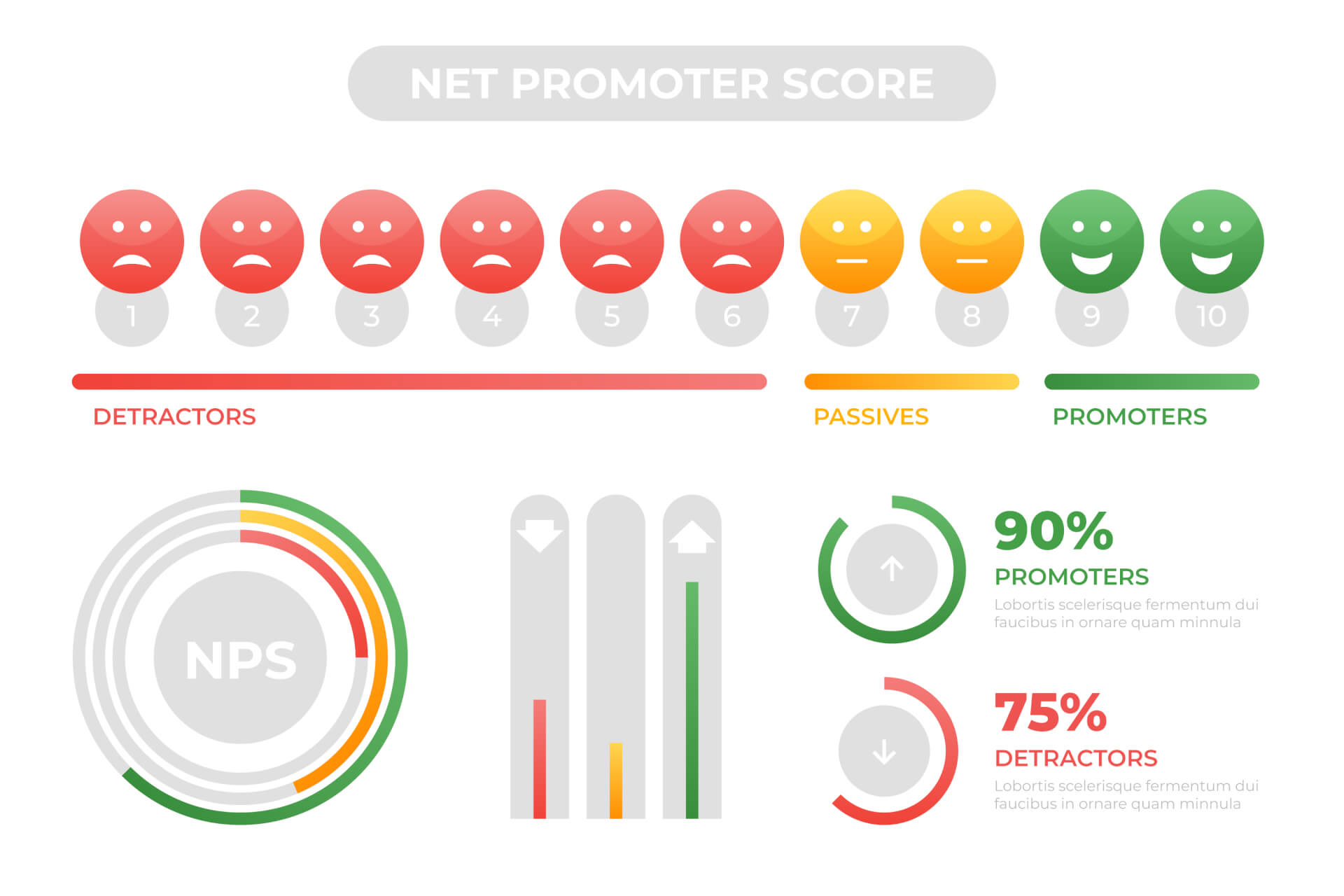 The Net Promoter Score (NPS) is a vital metric that businesses use to gauge customer loyalty and satisfaction. Introduced by Fred Reichheld in 2003, NPS has become a standard tool for companies looking to understand their customers' experiences and improve their services accordingly.
The Net Promoter Score (NPS) is a vital metric that businesses use to gauge customer loyalty and satisfaction. Introduced by Fred Reichheld in 2003, NPS has become a standard tool for companies looking to understand their customers' experiences and improve their services accordingly.
This article delves into the importance of NPS, its implementation in your company, and the benefits it brings to both businesses and customers.
Table of Contents
Understanding NPS
Definition of NPS
NPS is a customer loyalty metric that measures customers' willingness to recommend a company's products or services to others.
It is based on a single survey question:
"On a scale of 0-10, how likely are you to recommend our company/product/service to a friend or colleague?"
Importance of NPS
NPS is crucial because it provides a clear, straightforward measure of customer loyalty and satisfaction.
It helps businesses identify promoters, passives, and detractors, enabling targeted strategies to enhance customer experience and retention.
How NPS is Calculated
NPS is calculated by subtracting the percentage of detractors (those who give a score of 0-6) from the percentage of promoters (those who give a score of 9-10). The result ranges from -100 to 100.
10 Steps to Implement NPS in your Company

1. Define Objectives
Before implementing NPS, it's essential to define your objectives. Understand what you aim to achieve with NPS, such as improving customer satisfaction, increasing loyalty, or enhancing product features.
2. Choose the Right Tools
Select appropriate NPS survey tools that fit your company's needs. Many platforms offer NPS survey capabilities. For example Callexa, Qualtrics or HubSpot.
3. Design the Survey
Create a simple yet effective NPS survey. Keep it short and to the point, focusing on the primary NPS question and any follow-up questions to gather detailed feedback.
4. Determine the Survey Frequency
Decide how often you will send out NPS surveys. Regular intervals, such as quarterly or annually, are common practices.
5. Segment Your Customers
Segment your customers based on various criteria like demographics, purchase history, and engagement level to gather more targeted insights.
6. Distribute the Survey
Use multiple channels to distribute your NPS survey, such as email, SMS, or within your mobile app or website.
 7. Analyze the Results
7. Analyze the Results
Collect and analyze the survey responses. Identify trends, patterns, and areas for improvement from the feedback.
8. Take Action
Use the insights gained from NPS surveys to make data-driven decisions. Address issues raised by detractors and leverage promoters' feedback to enhance your offerings.
9. Close the Loop with Customers
Communicate with respondents about the actions taken based on their feedback. This shows that their input is valued and can improve customer relationships.
10. Monitor and Adjust
Regularly monitor your NPS scores and adjust your strategies as needed. Continuous improvement is key to maintaining high customer satisfaction and loyalty.

Recommended reading: Most people associate Net Promoter Score with big business. Our blog article shows you, “The Benefits of Implementing Net Promoter Score in Small Businesses”
Benefits of Implementing NPS

Increased Customer Loyalty
By understanding customer needs and addressing their concerns, NPS helps increase customer loyalty and reduce churn.
Better Customer Experience
NPS provides actionable insights that can be used to improve the overall customer experience, leading to higher satisfaction.
Enhanced Product Development
Customer feedback from NPS surveys can guide product development, ensuring that new features align with customer needs.
Competitive Advantage
A high NPS score can serve as a competitive differentiator, highlighting your company's commitment to customer satisfaction.

Reading recommendation: The advantages speak for themselves, so read on here, we'll show you "Reasons for using the Net Promoter Score every day"
Common Challenges in Implementing NPS

Survey Fatigue
Customers may experience survey fatigue if surveys are too frequent or lengthy. Keep surveys concise and relevant to avoid this.
Response Bias
Ensure that your survey sample is representative of your entire customer base to avoid response bias.
Misinterpretation of Data
Properly analyze and interpret NPS data to make informed decisions. Avoid jumping to conclusions based on limited feedback.

Reading recommendation: The following blog article shows you “Ways to integrate NPS surveys”
Best Practices for NPS Implementation

Personalize Surveys
Personalize your NPS surveys to make them more engaging and relevant to the respondent.
Follow-Up with Respondents
Follow up with customers who provide feedback to show that their input is valued and to gather more detailed insights.
Benchmark Against Competitors
Compare your NPS scores with industry benchmarks to understand your performance relative to competitors.
 Reading recommendation: Further methods of NPS implementation are discussed in our blog article “Proven methods for implementing the Net Promoter Score (NPS) in e-commerce”.
Reading recommendation: Further methods of NPS implementation are discussed in our blog article “Proven methods for implementing the Net Promoter Score (NPS) in e-commerce”.
Conclusion
Implementing NPS in your company can significantly enhance customer loyalty and satisfaction.
By following the steps outlined and addressing common challenges, you can effectively use NPS to drive improvements in your business.
Regularly monitoring and adjusting your strategies based on NPS feedback will ensure long-term success and a better customer experience.
 Reading recommendation: If this article helped you and you would like to find out more about the Net Promoter Score, continue reading here: “The Net Promoter Score – Basics and Areas of Application”
Reading recommendation: If this article helped you and you would like to find out more about the Net Promoter Score, continue reading here: “The Net Promoter Score – Basics and Areas of Application”